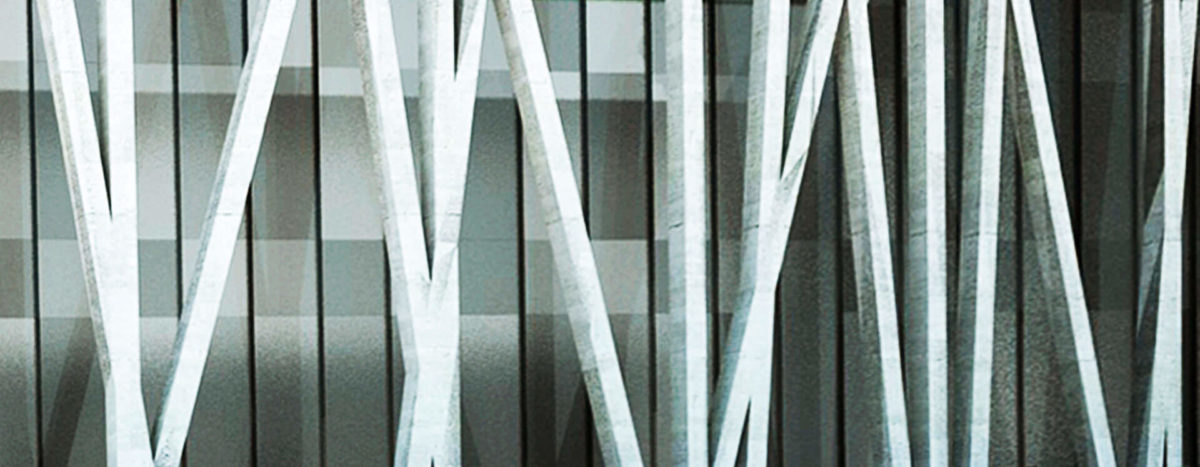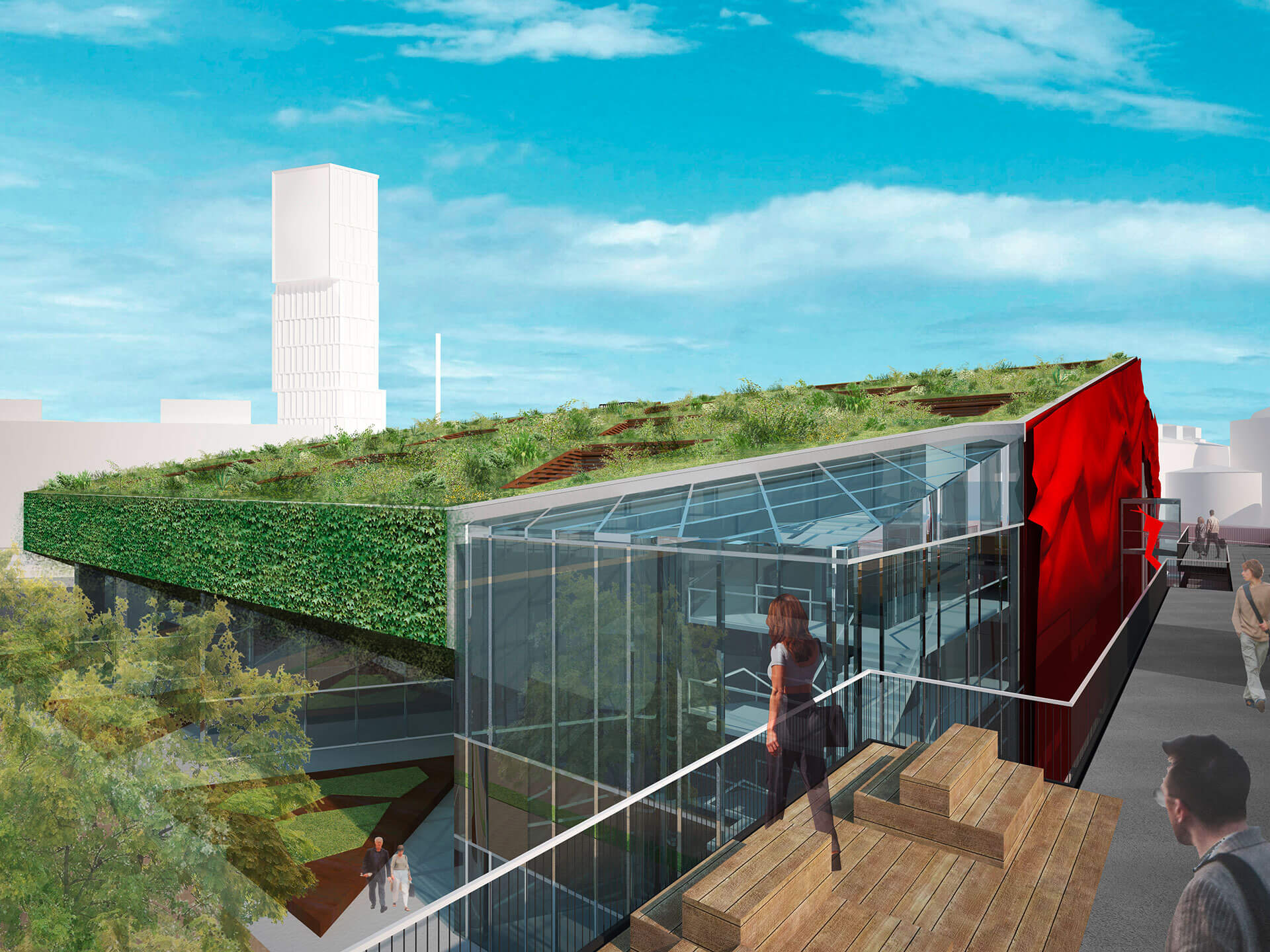con Arch. Francesco CONTI, arch, Giovanni GIUSEPPINI, Elisa LOMBARDI, arch. Joshua PAGANO
L’edificio per parcheggio è previsto a servizio delle aree portuali dismesse della città di Aarhus (DNM), per le quali è in atto la conversione a quartiere urbano. Per la definizione del progetto dell’edifico, la municipalità di Aarhus, ha indetto un concorso internazionale.
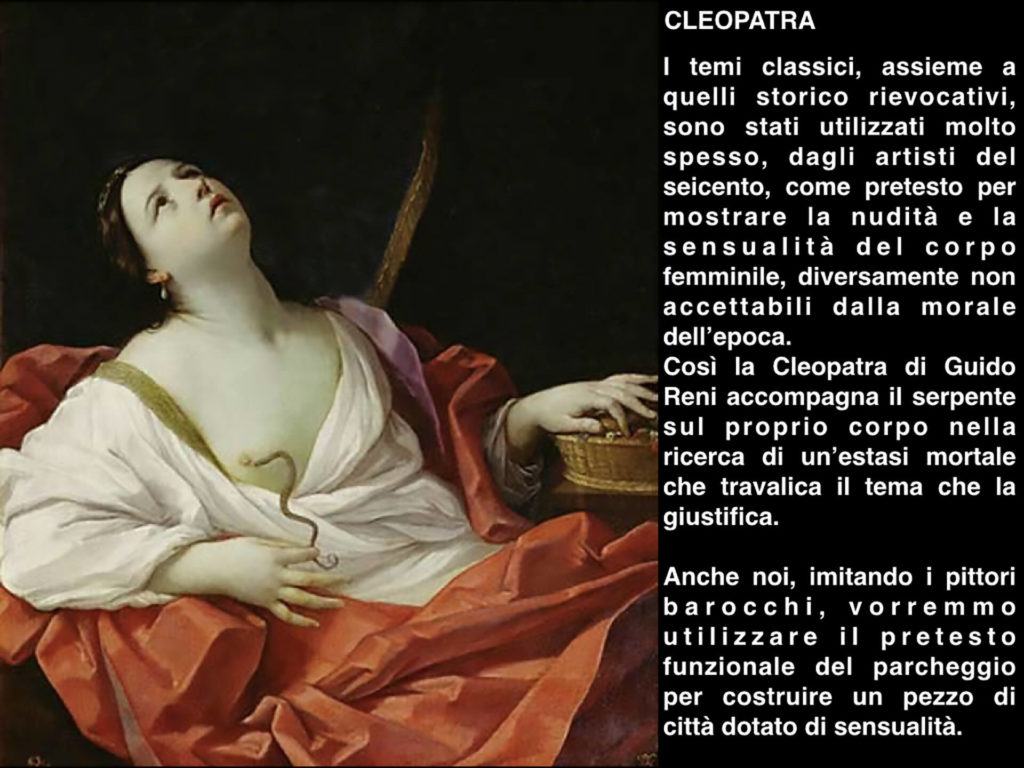
Come la Cleopatra di Guido Reni mostra la propria bellezza agli osservatori abbiamo pensato di rivolgere verso la città il bustodel fabbricato: un giardino disposto sul piano inclinato della copertura e nella parete strapiombante sul corridoio ricreativo. La metafora prosegue nella schienae nelle spalle, avvolte da un drappo che forma un panneggio.
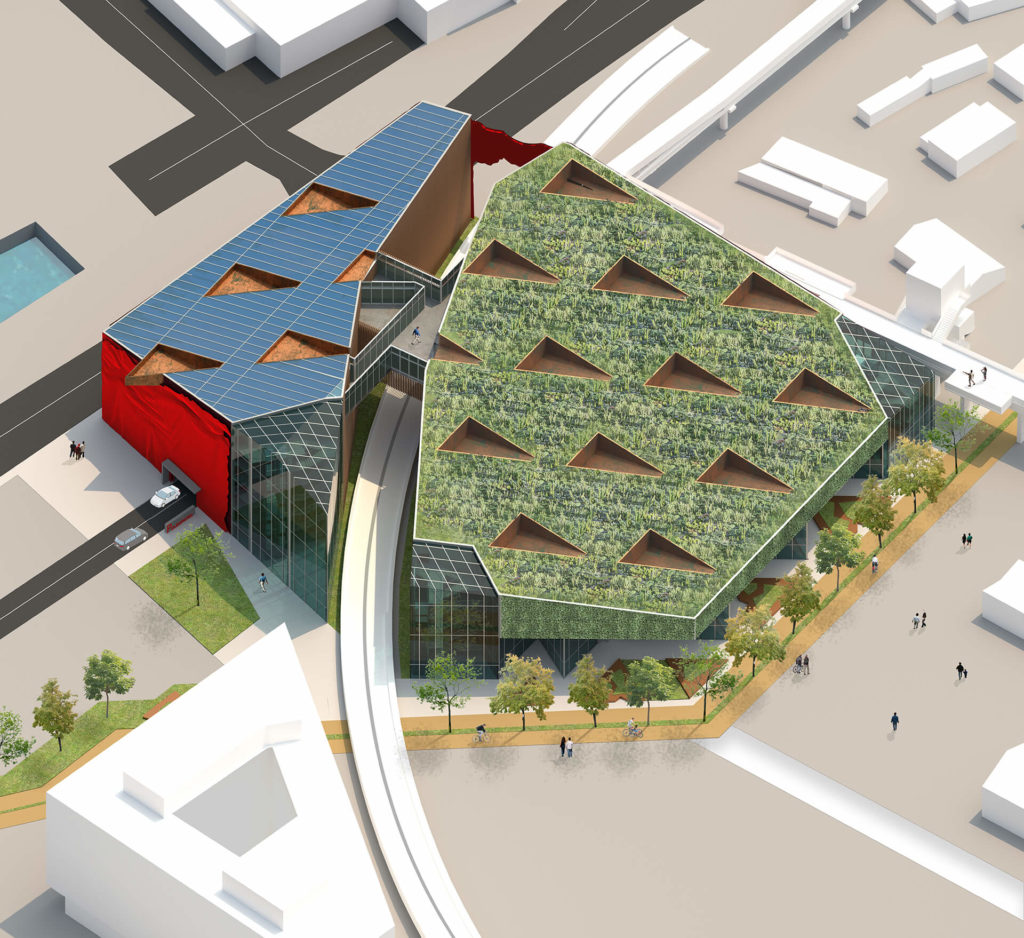
La visione del fabbricato, dai percorsi pubblici e dalla strada del porto, contribuirà alla formazione dell’identità urbana del nuovo quartiere in corso di formazione.
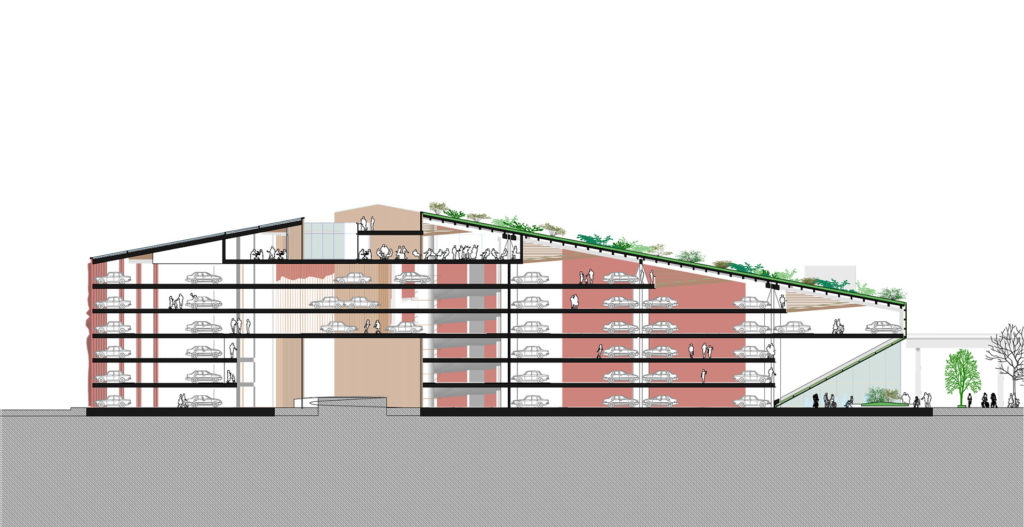
La presenza del giardino aiuterà l’avvio della costruzione di una realtà urbana rivolta verso condizioni ambientali più sostenibili: nel piano inclinato potranno essere impiantati arbusti e fiori, adatti al clima locale, a libera crescita e con bassa manutenzione. Le essenze scelte favoriranno lo sviluppo della biodiversità; nel verde rampicante, che ricopre le fronti rivolte verso il corridoio ricreativo, potranno essere inseriti interstizi e alloggiamenti per la piccola fauna.
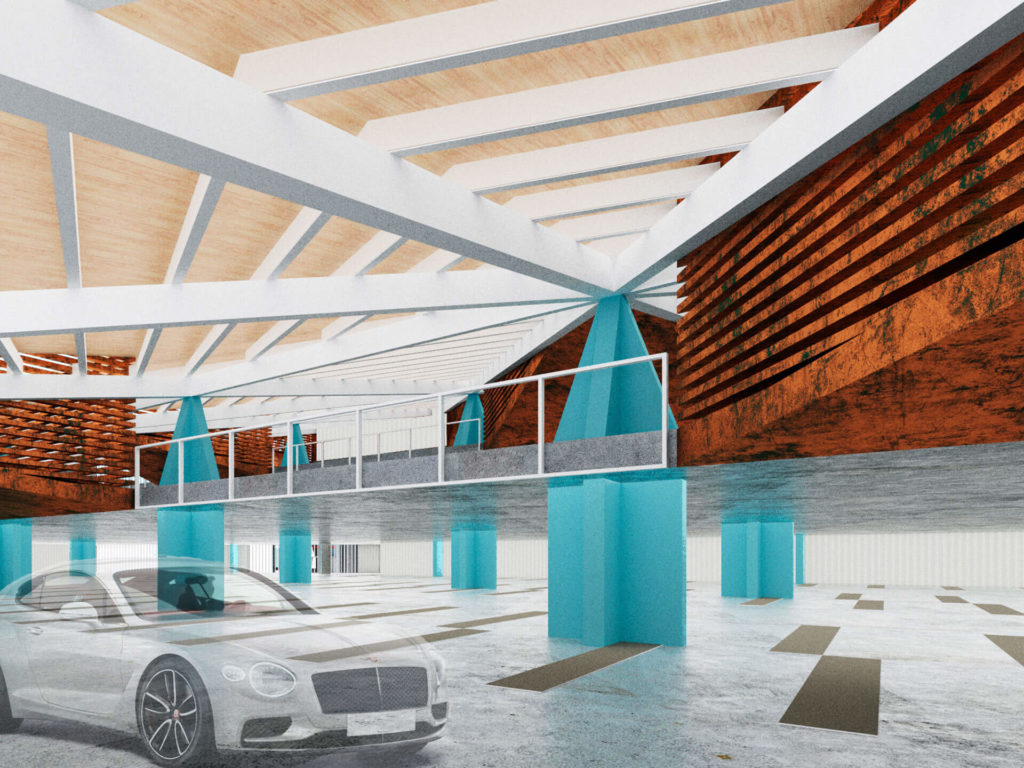
Il lato della copertura rivolto verso il porto potrà essere rivestito di pannelli fotovoltaici che forniranno l’energia necessaria all’edificio.
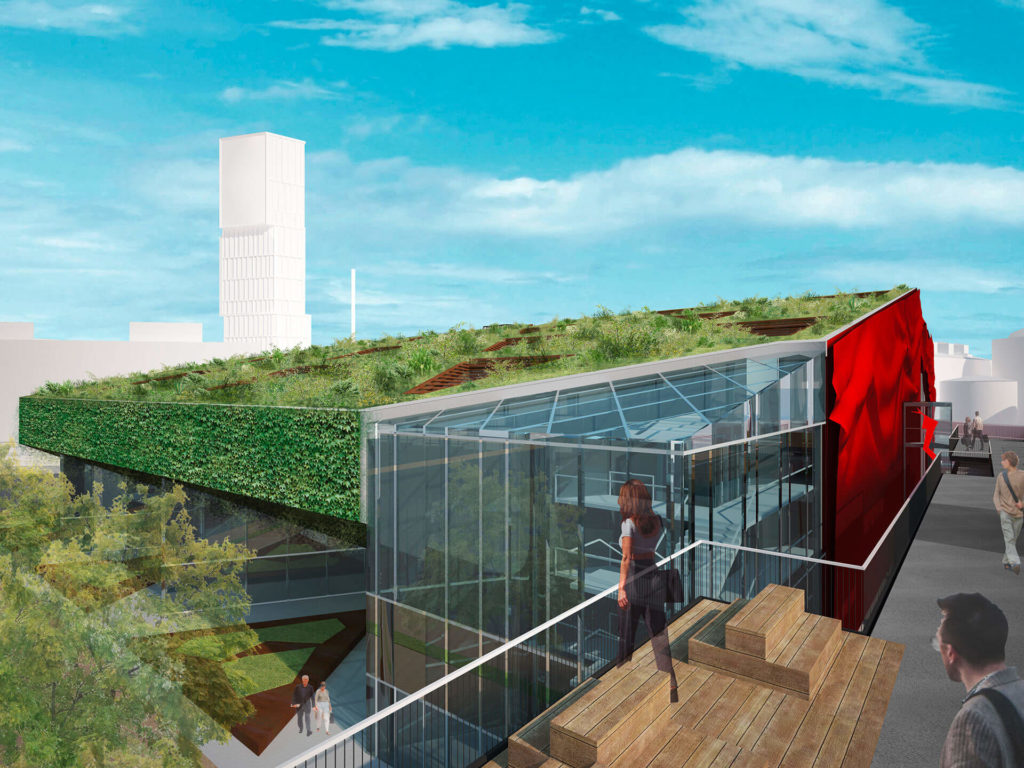
ENGLISH TEXT
The parking building is planned to serve the abandoned port areas of the city of Aarhus (DNM), for which the conversion to urban district is underway.
For the definition of the building project, the municipality of Aarhus has launched an international competition.
The classic themes, together with the historical ones reminiscent, have been used very often, by seventeenth-century artists, as a pretext to show the nudity and sensuality of the female body, differently unacceptable from the morals of the time.
So Guido Reni’s Cleopatra accompanies the snake on its body in the search for a deadly ecstasy that goes beyond the theme that justifies it.
We too, imitating the Baroque painters, would like to use the functional pretext of the parking lot to build a piece of city with sensuality.
As Guido Reni’s Cleopatra shows her beauty to observers, we thought to turn the bust of the building towards the city: a garden arranged on the inclined plane of the roof and in the overhanging wall on the recreational corridor. The metaphor continues in the back and shoulders, wrapped in a drape that forms a drapery.
The vision of the building, from public paths and from the harbor road, will contribute to the formation of the urban identity of the new neighborhood being formed.The presence of the garden will help start the construction of an urban reality aimed at more sustainable environmental conditions: shrubs and flowers can be planted on the inclined plane, suitable for the local climate, with free growth and low maintenance. The essences chosen will favor the development of biodiversity; in the climbing green, which covers the fronts facing the recreational corridor, interstices and housings for small fauna can be inserted.
